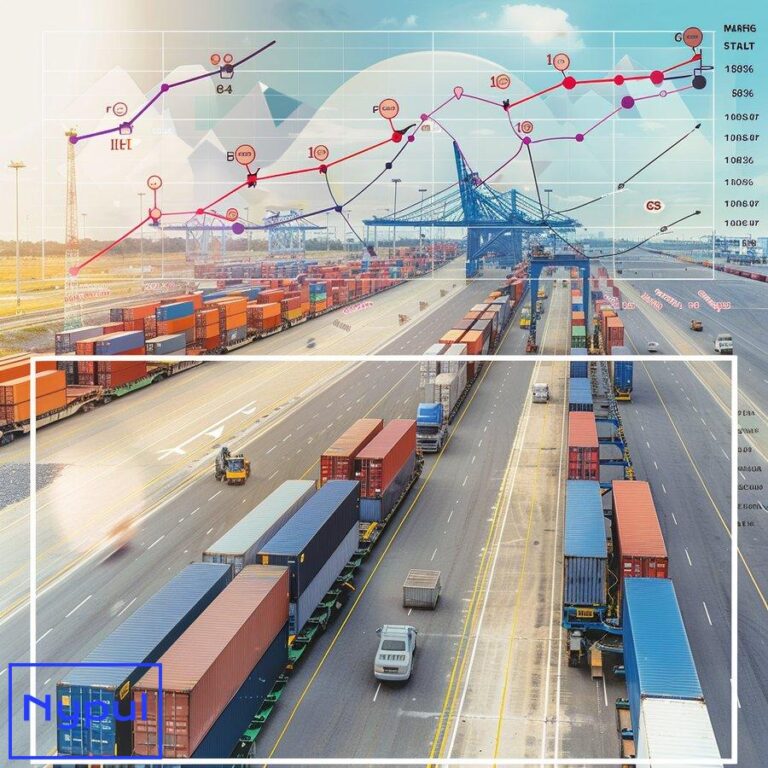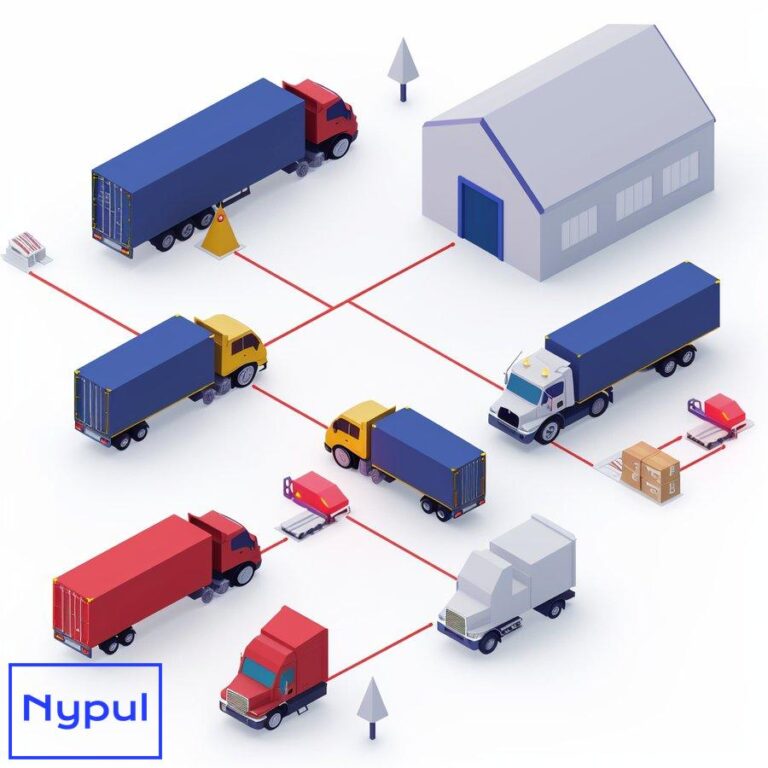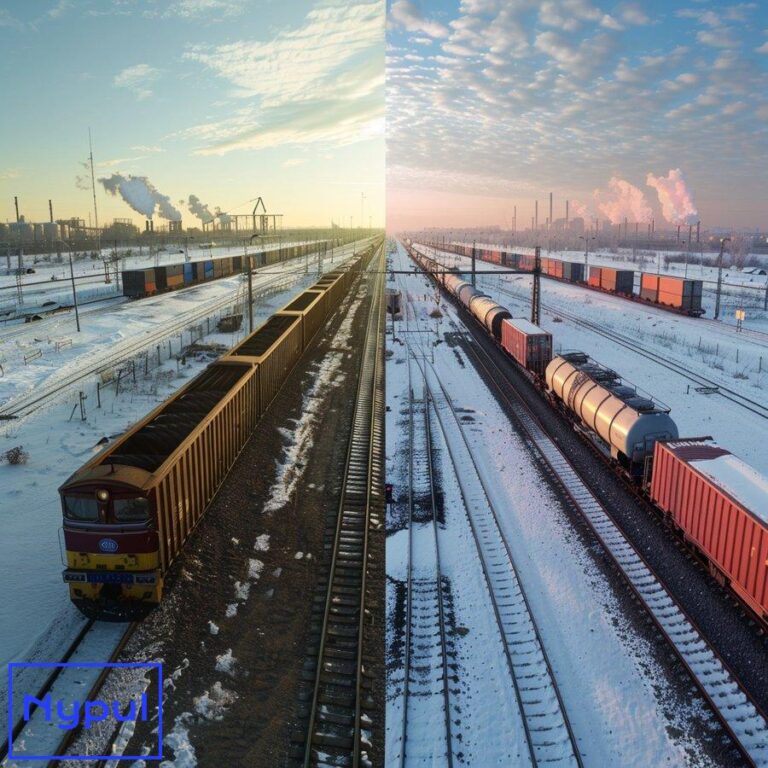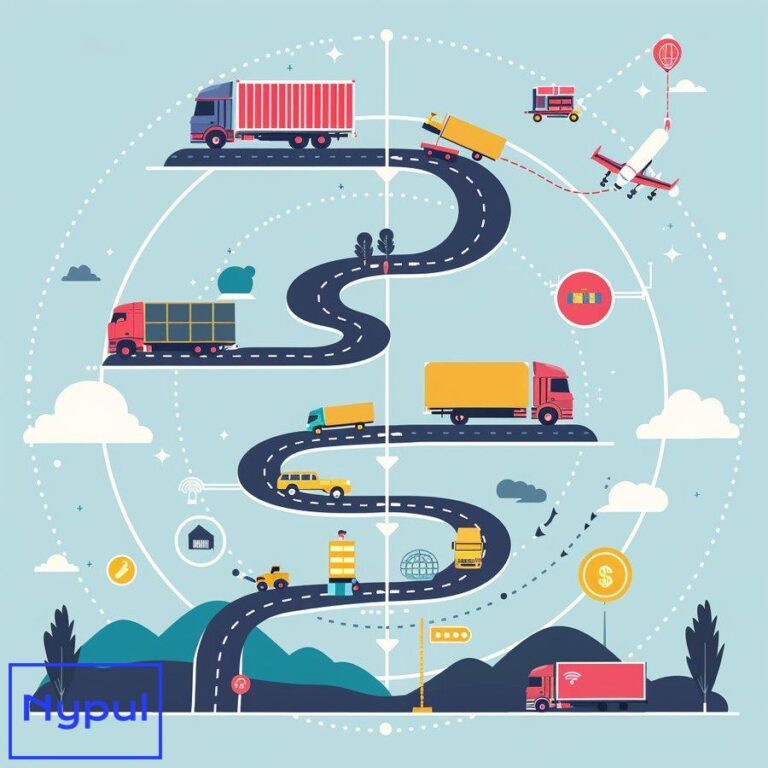What Is the Environmental Impact of Freight Shipping
How significant is freight shipping’s contribution to global emissions?
Freight shipping plays a crucial role in global trade and economic growth, but it also has a substantial environmental footprint. The shipping industry’s contribution to global emissions is significant and growing, raising concerns about its long-term sustainability.
According to the International Maritime Organization (IMO), international shipping accounted for approximately 2.89% of global anthropogenic CO2 emissions in 2018. This may seem like a small percentage, but it translates to about 1 billion metric tons of CO2 annually – roughly equivalent to the total emissions of Germany, the world’s sixth-largest emitter.
The breakdown of emissions by freight transport mode reveals that:
Road freight: Trucks and vans are responsible for the largest share of freight emissions, accounting for about 65% of the total. This is due to their widespread use for short and medium-distance transport, as well as their reliance on fossil fuels.
Maritime shipping: Despite carrying over 80% of global trade by volume, ships contribute about 10-15% of freight transport emissions. Their relative efficiency is offset by the massive scale of seaborne trade.
Air freight: While air cargo represents a small fraction of total freight volume, it has a disproportionate impact on emissions. Aviation accounts for approximately 12% of transport-related CO2 emissions.
Rail freight: Trains are generally the most energy-efficient mode of land transport, contributing only about 2% of freight emissions despite moving significant volumes of cargo.
To put these figures into perspective, here’s a comparison of CO2 emissions per ton-kilometer for different freight modes:
| Transport Mode | CO2 Emissions (g/ton-km) |
|---|---|
| Air freight | 500-950 |
| Road freight | 60-150 |
| Rail freight | 30-100 |
| Sea freight | 10-40 |
It’s important to note that these figures can vary depending on factors such as vehicle efficiency, load factors, and route characteristics.
The significance of freight shipping’s emissions is amplified by the sector’s projected growth. The IMO forecasts that, under a business-as-usual scenario, shipping emissions could increase by 50-250% by 2050, depending on future economic and energy developments. This potential surge in emissions underscores the urgent need for decarbonization efforts in the freight transport sector.
The environmental impact of freight shipping extends beyond just CO2 emissions. The industry also contributes to other forms of pollution and ecological disruption, which we’ll explore in the following sections. Understanding the full scope of these impacts is crucial for developing effective strategies to mitigate the environmental footprint of global freight transport.
What are the primary greenhouse gases emitted by freight transport?
Freight transport is a significant contributor to greenhouse gas (GHG) emissions, with several gases playing a role in its environmental impact. Understanding these emissions is crucial for developing effective mitigation strategies. The primary greenhouse gases emitted by freight transport are:
Carbon Dioxide (CO2): CO2 is the most abundant greenhouse gas emitted by freight transport. It’s produced by the combustion of fossil fuels in engines of trucks, ships, planes, and trains. CO2 emissions from freight transport are directly proportional to fuel consumption and the carbon content of the fuel used.

Methane (CH4): While less abundant than CO2, methane is a potent greenhouse gas with a global warming potential 28-36 times that of CO2 over a 100-year period. In freight transport, methane emissions primarily come from the incomplete combustion of fuel in engines and from the production and distribution of natural gas used in some freight vehicles.
Nitrous Oxide (N2O): N2O is another potent greenhouse gas, with a global warming potential about 265-298 times that of CO2 over a 100-year period. In freight transport, N2O is produced as a byproduct of fuel combustion, particularly in diesel engines.
Hydrofluorocarbons (HFCs): HFCs are synthetic greenhouse gases used in refrigeration systems for temperature-controlled freight transport. While they don’t directly result from fuel combustion, their leakage during operation and maintenance contributes to the overall GHG footprint of freight transport.
Black Carbon: Although not a gas, black carbon is a potent climate forcer. It’s a component of particulate matter produced by incomplete combustion of fossil fuels, especially in diesel engines. Black carbon absorbs solar radiation and can accelerate the melting of ice and snow when deposited on these surfaces.
The relative contribution of these greenhouse gases varies depending on the mode of freight transport:
| Transport Mode | Primary GHG Emissions |
|---|---|
| Road Freight | CO2, N2O, Black Carbon |
| Maritime | CO2, Black Carbon, CH4 (from LNG-powered ships) |
| Air Freight | CO2, N2O, Water Vapor (indirect GHG effect) |
| Rail Freight | CO2 (less for electrified railways), Black Carbon |
It’s worth noting that the impact of these emissions goes beyond their direct greenhouse effect:
Ozone formation: NOx emissions, while not greenhouse gases themselves, contribute to the formation of tropospheric ozone, which is a greenhouse gas and air pollutant.
Aerosol effects: Sulfur dioxide (SO2) emissions, particularly from maritime shipping, can form sulfate aerosols that have a cooling effect on the climate. However, recent regulations limiting sulfur content in marine fuels are reducing this effect.
Indirect effects: Some emissions, like those leading to cloud formation in ship tracks, can have complex effects on the Earth’s radiation balance.
The composition and quantity of GHG emissions from freight transport are influenced by factors such as:
Fuel type: Different fuels have varying carbon intensities. For example, liquefied natural gas (LNG) produces less CO2 per unit of energy than heavy fuel oil but may increase methane emissions.
Engine efficiency: More efficient engines generally produce fewer emissions per unit of work done.
Operational practices: Factors like speed, load factor, and routing can significantly affect the amount of GHGs emitted per ton-kilometer of freight moved.
Refrigeration needs: Temperature-controlled transport requires additional energy and may involve the use of HFCs, increasing the overall GHG footprint.
Understanding the profile of greenhouse gas emissions from freight transport is essential for developing targeted mitigation strategies. These may include technological improvements, operational optimizations, and shifts to lower-emission transport modes. As the freight sector continues to grow, addressing these emissions will be crucial in the global effort to combat climate change.
How does freight shipping affect air quality and human health?
Freight shipping, while essential for global trade, has significant impacts on air quality and, consequently, human health. The emissions from various modes of freight transport contribute to air pollution, which can lead to a range of health issues, particularly in urban areas and port cities.
Air Pollutants from Freight Transport
The primary air pollutants emitted by freight transport include:
Particulate Matter (PM): PM2.5 and PM10 are tiny particles that can penetrate deep into the lungs. Diesel engines, common in trucks and ships, are major sources of PM emissions.
Nitrogen Oxides (NOx): These gases contribute to the formation of smog and acid rain. They are produced by the high-temperature combustion in vehicle engines.
Sulfur Oxides (SOx): Primarily emitted by ships burning high-sulfur fuels, SOx can cause respiratory issues and contribute to acid rain.
Volatile Organic Compounds (VOCs): These are emitted from fuel combustion and evaporation, contributing to smog formation.
Carbon Monoxide (CO): A product of incomplete combustion, CO can be harmful in high concentrations.
Ground-level Ozone: While not directly emitted, it’s formed when NOx and VOCs react in sunlight, causing respiratory problems.
Health Impacts of Air Pollution from Freight Transport
The health effects of these pollutants are wide-ranging and can be severe:
Respiratory Issues: Exposure to PM, NOx, and ozone can exacerbate asthma, cause bronchitis, and reduce lung function.
Cardiovascular Problems: Fine particulate matter can enter the bloodstream, increasing the risk of heart attacks and strokes.
Cancer: Long-term exposure to diesel exhaust particles has been linked to an increased risk of lung cancer.
Premature Death: The World Health Organization estimates that outdoor air pollution causes about 4.2 million premature deaths per year globally.
Developmental Issues: Air pollution can affect fetal development, leading to low birth weight and other complications.
The severity of these health impacts varies depending on factors such as proximity to freight routes, local air quality, and individual susceptibility. Urban areas with high traffic volumes and port cities tend to be particularly affected.
Quantifying the Health Impact
Studies have attempted to quantify the health impacts of freight-related air pollution:
| Health Outcome | Estimated Annual Cases (Global) |
|---|---|
| Premature Deaths | 60,000 – 400,000 |
| Childhood Asthma Cases | 1 – 14 million |
| Days of Work Lost | 5 – 20 million |
These figures vary widely due to differences in methodology and scope of studies.
Environmental Justice Concerns
The health impacts of freight-related air pollution often disproportionately affect low-income communities and communities of color, which are more likely to be located near major transportation corridors, ports, and logistics hubs. This raises important environmental justice concerns.
Mitigation Strategies
Efforts to reduce the air quality impacts of freight transport include:
Emission Standards: Implementing stricter emission standards for vehicles and vessels.
Clean Fuel Adoption: Promoting the use of low-sulfur fuels, biofuels, and alternative energy sources like electricity and hydrogen.
Technological Improvements: Developing more efficient engines and exhaust after-treatment systems.
Operational Changes: Implementing practices like slow steaming for ships and anti-idling policies for trucks.
Urban Planning: Designing freight routes to minimize exposure in residential areas.
Port Electrification: Providing shore power for ships at berth to reduce emissions from auxiliary engines.
The impact of freight shipping on air quality and human health is a complex issue that requires a multi-faceted approach. As global trade continues to grow, addressing these impacts will be crucial for protecting public health and ensuring sustainable development of the freight sector.
What impact does freight transport have on marine ecosystems?
Freight transport, particularly maritime shipping, has significant impacts on marine ecosystems. These impacts range from direct physical disturbances to chemical pollution and the introduction of invasive species. Understanding these effects is crucial for developing strategies to protect marine biodiversity and ecosystem health.
Physical Disturbances
Ship Strikes: Large vessels can collide with marine mammals, sea turtles, and other marine life. This is particularly problematic in areas with high shipping traffic and important habitats for endangered species.
Noise Pollution: The constant low-frequency noise from ship engines can disrupt marine animal communication, navigation, and feeding behaviors. This affects a wide range of species, from large whales to small invertebrates.
Habitat Destruction: Port construction and channel dredging can destroy coastal and seafloor habitats. Anchoring in sensitive areas like coral reefs can cause direct physical damage.
Chemical Pollution
Oil Spills: Accidental spills can have devastating effects on marine ecosystems, coating animals and plants with oil and poisoning the water.
Ballast Water Discharge: Ships release ballast water containing various pollutants and potentially harmful microorganisms.
Antifouling Paints: These paints, used to prevent the growth of organisms on ship hulls, can leach toxic compounds into the water.
Air Pollution Deposition: Emissions from ships contribute to ocean acidification and can introduce harmful substances like heavy metals into marine environments.
Invasive Species
Ballast Water Transport: Ships inadvertently transport aquatic organisms in their ballast water, potentially introducing invasive species to new ecosystems.
Hull Fouling: Organisms attached to ship hulls can be transported to new environments, potentially becoming invasive.
Ecosystem Disruption
Algal Blooms: Nutrient pollution from ships can contribute to harmful algal blooms, which can deplete oxygen in the water and create “dead zones.”
Food Web Alterations: The cumulative effects of shipping can alter marine food webs, affecting species at all trophic levels.
Quantifying the Impact
While the full extent of shipping’s impact on marine ecosystems is difficult to quantify, some studies have provided estimates:
| Impact Category | Estimated Effect |
|---|---|
| Whale Strikes | 50-150 reported annually (likely underestimated) |
| Noise Pollution | 3.5 dB increase in ocean ambient noise per decade |
| Oil Spills | 7,000 tons spilled annually (average 2010-2020) |
| Invasive Species | $100 billion annual economic impact globally |
Mitigation Strategies
Efforts to reduce the impact of freight transport on marine ecosystems include:
Speed Restrictions: Implementing slow steaming in areas with high whale populations to reduce the risk of ship strikes.
Noise Reduction: Developing quieter ship designs and propulsion systems.
Ballast Water Management: Implementing systems to treat ballast water before discharge.
Marine Protected Areas: Establishing and respecting areas where shipping is restricted or prohibited.
Alternative Fuels: Transitioning to cleaner fuels to reduce air and water pollution.
Hull Cleaning: Regular cleaning and maintenance of ship hulls to reduce the transport of invasive species.
Improved Navigation: Using real-time whale detection systems and adjusting shipping lanes to avoid sensitive areas.
Case Study: The Great Barrier Reef
The Great Barrier Reef in Australia provides a stark example of the potential impacts of shipping on marine ecosystems. The reef is traversed by about 4,000 ships annually, presenting risks of groundings, oil spills, and chronic pollution. In 2010, the bulk carrier Shen Neng 1 ran aground on the reef, causing significant damage to coral and releasing toxic antifouling paint. This incident led to stricter regulations on shipping in the area, including mandatory use of pilots for large vessels and designation of the area as a Particularly Sensitive Sea Area by the International Maritime Organization.
The impact of freight transport on marine ecosystems is complex and far-reaching. While shipping remains an essential part of global trade, there is a growing recognition of the need to balance economic benefits with environmental protection. Continued research, technological innovation, and regulatory efforts are necessary to minimize the negative impacts of freight transport on the world’s oceans and marine life.
How does freight shipping contribute to energy consumption and resource depletion?
Freight shipping is a significant consumer of energy and resources, contributing to global resource depletion and environmental challenges. Understanding this impact is crucial for developing sustainable practices in the logistics industry.
Energy Consumption
Freight shipping relies heavily on fossil fuels, primarily oil-derived products like diesel and heavy fuel oil. The energy consumption varies by transport mode:
Maritime Shipping: Ships consume about 300 million metric tons of fuel annually, accounting for about 3-4% of global oil consumption.
Road Freight: Trucks are major consumers of diesel fuel, with the trucking industry accounting for about 17% of U.S. transportation energy use.
Air Freight: While a small portion of total freight, air cargo is highly energy-intensive, consuming about 2.5 times more energy per ton-kilometer than road transport.
Rail Freight: Generally more energy-efficient than road transport, but still a significant consumer, especially for non-electrified lines.
The table below provides a comparison of energy consumption by freight mode:
| Transport Mode | Energy Consumption (MJ/ton-km) |
|---|---|
| Air Freight | 15-20 |
| Road Freight | 2-3 |
| Rail Freight | 0.6-1.2 |
| Sea Freight | 0.1-0.5 |
Resource Depletion
Freight shipping contributes to resource depletion in several ways:
Fossil Fuel Depletion: The heavy reliance on oil-based fuels contributes to the depletion of non-renewable fossil fuel reserves.
Metal Resources: The construction of ships, trucks, planes, and trains requires significant amounts of metals like steel, aluminum, and copper.
Rare Earth Elements: Modern freight vehicles and vessels increasingly use rare earth elements in electronics and batteries, contributing to the depletion of these limited resources.
Water Resources: Shipping operations, especially in ports, can consume large amounts of freshwater for cleaning and maintenance.
Land Use: The development of transportation infrastructure like ports, airports, and logistics centers contributes to land use changes and potential habitat loss.
Indirect Resource Consumption
Freight shipping also indirectly contributes to resource consumption through:
Infrastructure Development: The construction and maintenance of roads,ports, airports, and rail networks require significant resources.
Vehicle Manufacturing: The production of ships, trucks, planes, and trains consumes energy and raw materials.
Packaging Materials: The logistics industry uses vast amounts of packaging materials, contributing to resource depletion and waste generation.
Energy for Refrigeration: Temperature-controlled freight requires additional energy for refrigeration systems.
Quantifying Resource Consumption
While precise global figures are challenging to obtain, some estimates provide insight into the scale of resource consumption:
Steel Consumption: The shipbuilding industry alone consumes about 1.5% of global steel production annually.
Rubber for Tires: The trucking industry is a major consumer of rubber, with a single large truck requiring up to 100 kg of rubber in its tires.
Fuel Consumption: The global shipping industry consumes about 5 million barrels of oil per day.
Mitigation Strategies
Efforts to reduce energy consumption and resource depletion in freight shipping include:
Fuel Efficiency Improvements: Developing more efficient engines and vessel designs.
Alternative Fuels: Exploring the use of biofuels, hydrogen, and electric propulsion.
Operational Optimization: Implementing slow steaming, route optimization, and improved load management.
Modal Shift: Encouraging the use of more energy-efficient transport modes like rail for appropriate routes.
Circular Economy Practices: Promoting the reuse and recycling of materials in vehicle manufacturing and packaging.
Renewable Energy Integration: Incorporating solar and wind power in port operations and for auxiliary power on vessels.
Lightweight Materials: Using advanced materials to reduce vehicle weight and improve fuel efficiency.
The energy consumption and resource depletion associated with freight shipping present significant challenges for sustainability. As global trade continues to grow, addressing these issues will be crucial for ensuring the long-term viability of the freight transport sector and mitigating its environmental impact.
What are the effects of freight infrastructure on land use and habitats?
The development and expansion of freight infrastructure have significant impacts on land use patterns and natural habitats. These effects are wide-ranging and often long-lasting, altering landscapes and ecosystems in both urban and rural areas.
Land Use Changes
Freight infrastructure requires substantial land area for various facilities:
Ports and Harbors: These facilities often occupy large coastal areas, leading to the transformation of natural shorelines and wetlands.
Airports: Air cargo facilities require extensive land for runways, terminals, and warehouses, often located near urban centers.
Rail Yards and Intermodal Facilities: These sprawling complexes serve as hubs for freight transfer between different transport modes.
Distribution Centers and Warehouses: The growth of e-commerce has led to a boom in large-scale logistics facilities, often on the outskirts of urban areas.
Road Networks: The expansion of highways and access roads to support freight movement contributes to urban sprawl and habitat fragmentation.
Quantitative Impact on Land Use
While global figures are difficult to obtain, some regional statistics illustrate the scale of land use impact:
| Infrastructure Type | Typical Land Area Required |
|---|---|
| Major Seaport | 500-5,000 hectares |
| Large Airport | 1,000-3,000 hectares |
| Intermodal Facility | 100-500 hectares |
| Distribution Center | 20-100 hectares |
Habitat Fragmentation and Loss
The development of freight infrastructure can lead to significant habitat disruption:
Ecosystem Disruption: Construction of ports, roads, and rail lines can destroy or fragment natural habitats, affecting biodiversity.
Wildlife Corridors: Transportation routes can create barriers to animal movement, disrupting migration patterns and gene flow between populations.
Edge Effects: The creation of new edges along infrastructure corridors can alter habitat conditions, affecting species composition and ecosystem dynamics.
Wetland Loss: Port development and channel dredging often result in the destruction of coastal wetlands, which are crucial for many species and provide important ecosystem services.
Deforestation: Clearing land for infrastructure development contributes to deforestation, particularly in developing regions expanding their logistics capabilities.
Urban Heat Island Effect: The expansion of paved surfaces for roads and facilities contributes to increased temperatures in urban areas.
Soil and Water Impacts
Freight infrastructure development also affects soil and water resources:
Soil Sealing: Paving large areas for roads, parking lots, and facilities reduces soil permeability, affecting water infiltration and soil ecology.
Hydrological Changes: Altering natural drainage patterns can lead to increased flooding risks and changes in local water cycles.
Water Pollution: Runoff from roads and logistics facilities can carry pollutants into nearby water bodies.
Coastal Erosion: Port development and shipping channels can alter coastal dynamics, potentially leading to increased erosion in some areas.
Mitigation Strategies
Efforts to reduce the negative impacts of freight infrastructure on land use and habitats include:
Brownfield Development: Prioritizing the redevelopment of existing industrial sites for new freight facilities.
Green Infrastructure: Incorporating natural elements like green corridors and stormwater management systems into infrastructure design.
Wildlife Crossings: Constructing overpasses or underpasses to maintain habitat connectivity across transportation corridors.
Compact Facility Design: Optimizing the layout of logistics facilities to minimize land use.
Habitat Restoration: Implementing projects to restore or create new habitats to offset losses from infrastructure development.
Smart Growth Policies: Integrating freight planning with broader urban and regional development strategies to minimize sprawl.
Case Study: Panama Canal Expansion
The expansion of the Panama Canal, completed in 2016, provides an example of the complex land use and habitat impacts of major freight infrastructure projects. The project involved significant excavation and flooding of land to create new locks and channels. While efforts were made to minimize environmental impacts, including reforestation programs and wildlife rescue operations, the project still resulted in the loss of tropical forest habitat and the relocation of communities. However, the expansion has allowed for more efficient shipping routes, potentially reducing overall emissions from longer alternative routes.
The effects of freight infrastructure on land use and habitats are significant and multifaceted. As global trade continues to grow, balancing the need for efficient logistics networks with environmental conservation will be a key challenge. Sustainable development of freight infrastructure will require careful planning, innovative design, and a commitment to minimizing ecological impacts while meeting economic needs.
How does freight shipping contribute to water pollution and ocean acidification?
Freight shipping, particularly maritime transport, is a significant contributor to water pollution and plays a role in ocean acidification. These impacts affect marine ecosystems, coastal communities, and global climate patterns.
Water Pollution from Freight Shipping
Freight shipping contributes to water pollution through various mechanisms:
Oil Spills: Accidental spills from tankers and other vessels can have devastating effects on marine environments. While large spills attract significant attention, chronic small spills and leaks also contribute to ongoing pollution.
Ballast Water Discharge: Ships take in and release ballast water to maintain stability. This water can contain pollutants, invasive species, and harmful microorganisms.
Bilge Water: The oily water that collects in the lowest part of a ship’s hull often contains fuel, lubricants, and other contaminants.
Sewage and Wastewater: Despite regulations, some ships still discharge untreated or inadequately treated sewage and gray water into the ocean.
Marine Debris: Improperly managed waste from ships contributes to marine litter, including plastics that can harm marine life.
Antifouling Paints: These paints, used to prevent the growth of organisms on ship hulls, can leach toxic compounds like copper and tributyltin (TBT) into the water.
Air Pollution Deposition: Emissions from ships contribute to the deposition of pollutants like nitrogen and sulfur compounds into water bodies.
Quantifying Water Pollution from Shipping
While precise global figures are challenging to obtain, some estimates provide insight into the scale of water pollution from shipping:
| Pollution Type | Estimated Annual Amount |
|---|---|
| Oil Spills | 7,000 tons (2010-2020 avg) |
| Ballast Water | 3-5 billion tons discharged |
| Marine Debris | 20% of ocean plastic pollution |
Ocean Acidification
Freight shipping contributes to ocean acidification primarily through its emissions of carbon dioxide (CO2) and other pollutants:
CO2 Emissions: When CO2 is absorbed by seawater, it forms carbonic acid, leading to increased ocean acidity. The shipping industry is responsible for about 2.89% of global CO2 emissions.
Sulfur and Nitrogen Oxides: These emissions, when deposited in the ocean, can also contribute to acidification.
Impact of Ocean Acidification
The increasing acidity of the oceans has several consequences:
Coral Reef Degradation: Higher acidity makes it harder for corals and other calcifying organisms to build and maintain their structures.
Shell Formation: Many marine organisms, including mollusks and some plankton species, struggle to form shells in more acidic conditions.
Ecosystem Disruption: Changes in ocean chemistry can affect the behavior and survival of various marine species, potentially disrupting entire food webs.
Carbon Sink Capacity: As oceans become more acidic, their ability to absorb CO2 from the atmosphere may decrease, potentially accelerating climate change.
Mitigation Strategies
Efforts to reduce water pollution and ocean acidification from freight shipping include:
Stricter Regulations: Implementing and enforcing international conventions like MARPOL (International Convention for the Prevention of Pollution from Ships).
Ballast Water Treatment: Requiring ships to install and use ballast water treatment systems to prevent the spread of invasive species and pollutants.
Low-Sulfur Fuels: Mandating the use of low-sulfur fuels to reduce sulfur oxide emissions.
Scrubber Systems: Installing exhaust gas cleaning systems to reduce air pollutants that can contribute to water pollution and acidification.
Zero-Emission Technologies: Developing and adopting technologies like electric propulsion and hydrogen fuel cells for ships.
Improved Waste Management: Implementing better onboard waste management practices and port reception facilities.
Alternative Antifouling Methods: Developing and using less toxic alternatives to traditional antifouling paints.
Carbon Pricing: Implementing market-based measures to incentivize emission reductions in the shipping industry.
Case Study: Baltic Sea SECA
The Baltic Sea Sulfur Emission Control Area (SECA) provides an example of successful regulation to reduce shipping’s impact on water quality. Implemented in 2015, it requires ships in the Baltic Sea to use fuel with a sulfur content not exceeding 0.1% or to use equivalent emission reduction technologies. This has led to a significant reduction in sulfur deposition in the Baltic Sea, helping to mitigate acidification and improve water quality.
The contribution of freight shipping to water pollution and ocean acidification is a complex issue that requires a multi-faceted approach to address. As global trade continues to grow, finding ways to reduce these impacts will be crucial for protecting marine ecosystems and maintaining the health of our oceans. This will require ongoing technological innovation, stronger international cooperation, and a commitment to sustainable shipping practices.
What are the noise pollution impacts of freight transport on urban areas and wildlife?
Noise pollution from freight transport is a significant environmental concern, affecting both urban populations and wildlife. The impacts of this noise can be far-reaching, influencing human health, animal behavior, and ecosystem dynamics.
Urban Noise Pollution
In urban areas, freight transport contributes to ambient noise levels through various sources:
Road Freight: Heavy trucks are major contributors to urban noise, particularly during nighttime deliveries.
Rail Freight: Train horns, wheel-rail interaction, and engine noise can be significant, especially near rail yards and along freight corridors.
Air Cargo: Aircraft noise affects communities near airports, with cargo flights often operating during night hours.
Port Operations: Loading and unloading activities, as well as ship engines, contribute to noise in port cities.
Health Impacts on Urban Populations
Prolonged exposure to freight transport noise can lead to various health issues:
Sleep Disturbance: Nighttime noise from freight activities can disrupt sleep patterns, leading to fatigue and decreased cognitive performance.
Cardiovascular Effects: Long-term exposure to high noise levels has been linked to increased risk of hypertension and heart disease.
Stress and Mental Health: Chronic noise exposure can lead to increased stress levels and may contribute to mental health issues.
Hearing Impairment: While less common, prolonged exposure to very high noise levels can lead to hearing loss.
Cognitive Development: Studies have shown that children exposed to high levels of traffic noise may experience impaired cognitive development.
Quantifying Urban Noise Impacts
The World Health Organization provides some guidelines for community noise levels:
| Time Period | Recommended Noise Level (dBA) |
|---|---|
| Daytime | < 55 |
| Nighttime | < 45 |
However, many urban areas exceed these levels, with freight transport being a significant contributor.
Wildlife Impacts
Noise pollution from freight transport can have significant effects on wildlife:
Behavioral Changes: Animals may alter their feeding, mating, or migration patterns in response to noise.
Communication Disruption: Noise can interfere with animal vocalizations used for territory defense, mate attraction, and predator avoidance.
Stress Responses: Chronic noise exposure can lead to increased stress hormone levels in animals, affecting their health and reproductive success.
Habitat Avoidance: Some species may abandon noisy areas, potentially leading to population declines in affected habitats.
Predator-Prey Dynamics: Noise can mask the sounds of approaching predators or prey, altering natural predator-prey relationships.
Marine Impacts: Underwater noise from ships can affect marine mammals, fish, and invertebrates, disrupting their behavior and communication.
Case Studies of Wildlife Impacts
Road Noise and Birds: Studies have shown that birds near noisy roads have altered song patterns and reduced breeding success.
Ship Noise and Whales: Research indicates that noise from large ships can interfere with whale communication and navigation, potentially leading to ship strikes.
Aircraft Noise and Wildlife: Studies near airports have found reduced species diversity and altered animal behavior in noise-affected areas.
Mitigation Strategies
Efforts to reduce noise pollution from freight transport include:
Vehicle Technology: Developing quieter engines, tires, and braking systems for trucks and trains.
Infrastructure Design: Using noise barriers, sound-absorbing road surfaces, and rail dampers to reduce noise propagation.
Operational Measures: Implementing speed limits, restricting nighttime operations, and optimizing routes to minimize noise in sensitive areas.
Electric and Hybrid Vehicles: Promoting the adoption of quieter electric and hybrid freight vehicles.
Urban Planning: Incorporating noise considerations into land-use planning and zoning decisions.
Quieter Aircraft: Developing and adopting quieter aircraft designs and operational procedures.
Underwater Noise Reduction: Implementing ship design and operational measures to reduce underwater noise, such as propeller modifications and speed restrictions.
Policy and Regulation: Establishing and enforcing noise emission standards for vehicles and equipment used in freight transport.
Community Engagement: Involving local communities in noise management planning and providing channels for reporting noise issues.
The noise pollution impacts of freight transport on urban areas and wildlife are significant and multifaceted. Addressing these impacts requires a combination of technological innovation, policy measures, and changes in operational practices. As freight volumes continue to grow, managing noise pollution will be crucial for protecting both human health and ecosystem integrity.
Balancing the economic benefits of freight transport with the need to minimize noise impacts presents an ongoing challenge for policymakers, urban planners, and the logistics industry. Successful noise mitigation strategies will likely require a collaborative approach involving government agencies, industry stakeholders, environmental organizations, and affected communities.
How is the environmental impact of freight shipping measured and reported?
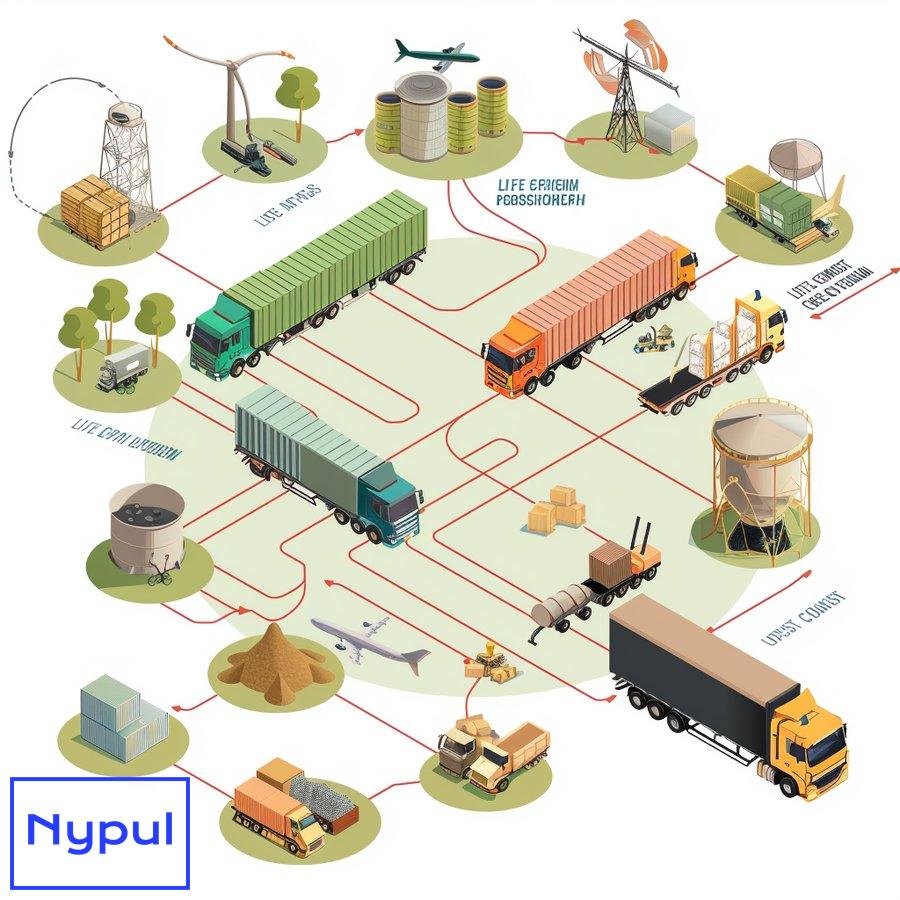
Measuring and reporting the environmental impact of freight shipping is crucial for understanding the sector’s contribution to global environmental challenges and for developing effective mitigation strategies. Various methodologies and frameworks have been developed to quantify and communicate these impacts.
Key Metrics and Indicators
The environmental impact of freight shipping is typically measured using several key metrics:
Greenhouse Gas Emissions: Usually measured in CO2 equivalent (CO2e) emissions per ton-kilometer or per TEU-kilometer (for container shipping).
Air Pollutant Emissions: Includes measurements of sulfur oxides (SOx), nitrogen oxides (NOx), particulate matter (PM), and volatile organic compounds (VOCs).
Energy Efficiency: Often expressed as energy consumed per ton-kilometer of freight moved.
Water Pollution: Measured through indicators like oil spills, ballast water discharges, and marine litter.
Noise Levels: Typically measured in decibels (dB) and often reported as average noise levels over specific time periods.
Biodiversity Impact: Can include metrics related to habitat disruption, species displacement, or invasive species introductions.
Land Use: Measured in terms of area occupied by freight infrastructure and facilities.
Measurement Methodologies
Several methodologies are used to measure and report the environmental impact of freight shipping:
Life Cycle Assessment (LCA): This comprehensive approach considers the environmental impacts throughout the entire life cycle of freight operations, from vehicle manufacturing to end-of-life disposal.
Carbon Footprint Analysis: Focuses specifically on greenhouse gas emissions associated with freight activities.
Environmental Impact Assessment (EIA): A systematic process used to evaluate the potential environmental effects of major infrastructure projects like port expansions or new rail lines.
Ecological Footprint: Measures the demand on and supply of nature’s resources and services required for freight activities.
Environmental Performance Index (EPI): A composite index that can be adapted to assess the overall environmental performance of freight operations.
Reporting Frameworks and Standards
Several frameworks and standards guide the measurement and reporting of environmental impacts in the freight sector:
Global Reporting Initiative (GRI): Provides sustainability reporting guidelines that include specific indicators for the transport sector.
Greenhouse Gas Protocol: Offers standards for measuring and managing GHG emissions, including a specific guide for transport operations.
ISO 14000 Series: International standards for environmental management systems, including ISO 14064 for quantifying and reporting greenhouse gas emissions.
Clean Cargo Working Group (CCWG): Provides standardized methodology for measuring and reporting ocean container shipping environmental performance.
IMO Data Collection System: Requires ships to report their fuel consumption and CO2 emissions annually.
SmartWay (US EPA): A voluntary program that provides a framework for tracking and improving freight transportation efficiency.
Challenges in Measurement and Reporting
Measuring and reporting environmental impacts in freight shipping face several challenges:
Data Availability and Quality: Obtaining accurate and comprehensive data across complex supply chains can be difficult.
Methodological Differences: Variations in measurement methodologies can make comparisons between different reports challenging.
Scope Definition: Determining the boundaries of what to include in environmental impact assessments (e.g., direct vs. indirect emissions) can be complex.
Allocation Issues: In multi-modal or shared transportation, allocating impacts to specific shipments or customers can be challenging.
Technological Limitations: Some impacts, like underwater noise or fine particulate emissions, can be difficult to measure accurately with current technology.
Reporting Frequency: Balancing the need for up-to-date information with the resources required for frequent reporting.
Best Practices in Environmental Impact Reporting
To ensure effective measurement and reporting of environmental impacts, the freight industry is adopting several best practices:
Standardization: Adopting widely recognized standards and methodologies to ensure consistency and comparability of reports.
Transparency: Clearly disclosing methodologies, assumptions, and data sources used in environmental impact assessments.
Third-Party Verification: Engaging independent auditors to verify environmental performance data and reports.
Stakeholder Engagement: Involving various stakeholders, including customers, regulators, and environmental groups, in defining relevant metrics and reporting approaches.
Continuous Improvement: Regularly reviewing and updating measurement and reporting practices to incorporate new scientific understanding and technological capabilities.
Integration with Business Metrics: Linking environmental performance indicators with financial and operational metrics to demonstrate the business case for sustainability.
Case Study: Maersk’s Sustainability Reporting
Maersk, one of the world’s largest container shipping companies, provides an example of comprehensive environmental impact reporting. Their annual sustainability report includes detailed metrics on CO2 emissions (both absolute and relative to cargo moved), air pollutants, and other environmental indicators. They use a combination of the Greenhouse Gas Protocol and Clean Cargo Working Group methodologies for emissions calculations. Maersk also sets science-based targets for emissions reduction and reports progress against these targets annually.
Effective measurement and reporting of the environmental impact of freight shipping is essential for driving improvements in the sector’s sustainability performance. As stakeholder expectations and regulatory requirements continue to evolve, the freight industry will need to further refine and standardize its approaches to environmental impact assessment and disclosure. This will not only help in identifying areas for improvement but also in demonstrating progress and building trust with customers, investors, and the broader public.
What strategies are being implemented to mitigate the environmental impact of freight shipping?
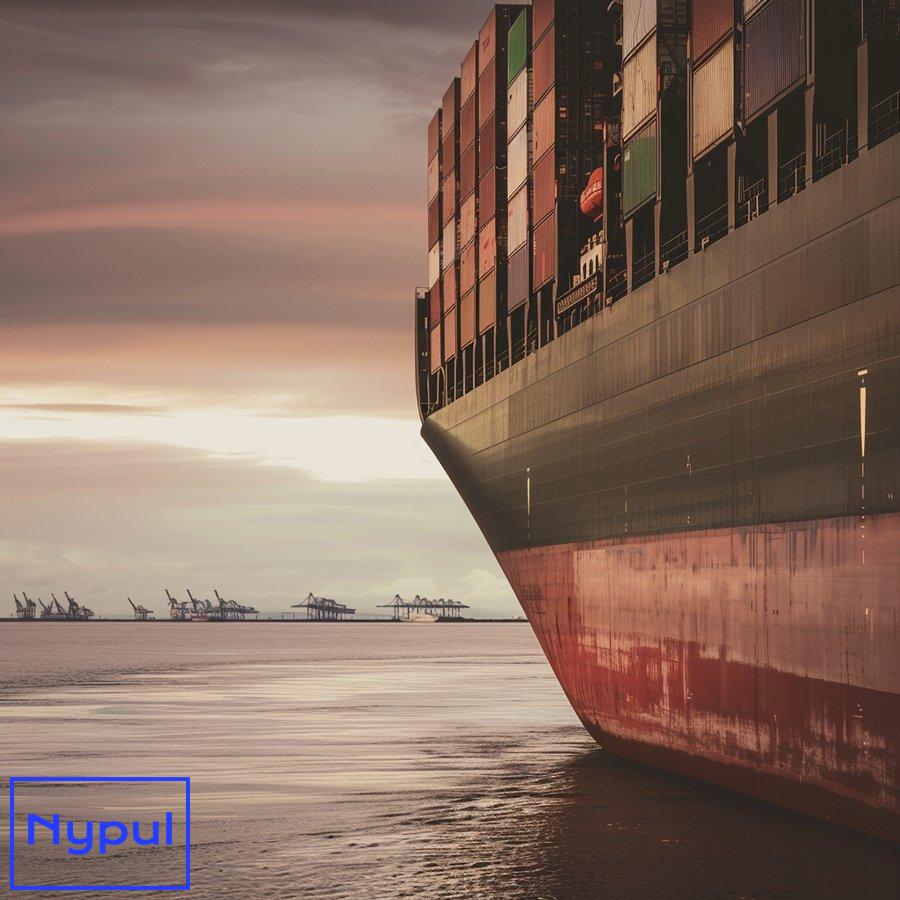
The freight shipping industry is increasingly recognizing the need to mitigate its environmental impact. Various strategies are being implemented across different modes of transport and throughout the supply chain. These efforts aim to reduce emissions, improve energy efficiency, and minimize other environmental impacts.
Technological Innovations
Alternative Fuels: The industry is exploring and adopting cleaner fuel options to reduce emissions:
Liquefied Natural Gas (LNG): Offers lower CO2 and particulate emissions compared to traditional marine fuels.
Biofuels: Derived from renewable sources, these can significantly reduce lifecycle CO2 emissions.
Hydrogen: Being explored for its potential as a zero-emission fuel, particularly in combination with fuel cells.
Electrification: Electric propulsion is being adopted, especially for short-sea shipping and port operations:
Battery-Electric Vessels: Increasingly used for short-distance routes and ferry services.
Shore Power (Cold Ironing): Allows ships to use land-based electricity while at berth, reducing emissions in port areas.
Energy Efficiency Technologies: Various technologies are being implemented to improve fuel efficiency:
Hull Design Optimization: Advanced hull shapes and coatings to reduce water resistance.
Waste Heat Recovery Systems: Capturing and reusing heat from engine exhaust.
LED Lighting: Replacing traditional lighting with energy-efficient LEDs throughout vessels and port facilities.
Emission Reduction Technologies: Implementing technologies to reduce harmful emissions:
Scrubbers: Exhaust gas cleaning systems to reduce sulfur emissions.
Selective Catalytic Reduction (SCR): Used to reduce NOx emissions.
Operational Strategies
Slow Steaming: Reducing vessel speed to optimize fuel consumption and reduce emissions.
Route Optimization: Using advanced weather routing and just-in-time arrival systems to minimize fuel consumption.
Improved Load Management: Maximizing cargo loads and minimizing empty runs to increase efficiency.
Modal Shift: Encouraging the use of more energy-efficient transport modes like rail for appropriate routes.
Collaborative Shipping: Coordinating shipments between different companies to maximize vessel utilization.
Regulatory and Policy Measures
IMO 2020: Global sulfur cap reducing the maximum sulfur content in marine fuels from 3.5% to 0.5%.
Energy Efficiency Design Index (EEDI): Mandatory energy efficiency standards for new ships.
Ship Energy Efficiency Management Plan (SEEMP): Requirement for ships to have a plan to improve energy efficiency.
Emission Control Areas (ECAs): Stricter emission limits in designated coastal areas.
Carbon Pricing Schemes: Exploring market-based measures to incentivize emission reductions.
Infrastructure Development
Port Electrification: Implementing electric cranes, vehicles, and equipment in ports.
LNG Bunkering Facilities: Developing infrastructure to support the use of LNG as a marine fuel.
Intermodal Connectivity: Improving connections between different transport modes to optimize overall efficiency.
Green Corridors: Establishing specific shipping routes with zero-emission solutions and supportive infrastructure.
Supply Chain Optimization
Digitalization: Implementing digital technologies to improve supply chain visibility and efficiency:
Internet of Things (IoT): Using sensors and connected devices to monitor and optimize freight movements.
Blockchain: Enhancing transparency and traceability in supply chains.
Artificial Intelligence: Employing AI for predictive maintenance and optimized routing.
Packaging Optimization: Reducing waste and improving load efficiency through better packaging design.
Circular Economy Practices: Implementing reverse logistics and recycling programs to minimize waste.
Industry Collaborations and Initiatives
Getting to Zero Coalition: A partnership aiming to commercialize zero-emission vessels by 2030.
Poseidon Principles: A framework for integrating climate considerations into ship financing decisions.
Sea Cargo Charter: An initiative to assess and disclose the climate alignment of ship chartering activities.
Clean Cargo Working Group: A business-to-business initiative to improve the environmental performance of container shipping.
Quantifying the Impact of Mitigation Strategies
While the full impact of these strategies is still emerging, some early results are promising:
| Strategy | Estimated Impact |
|---|---|
| Slow Steaming | 10-30% reduction in fuel consumption |
| LNG as Fuel | 20-30% reduction in CO2 emissions |
| Shore Power | Up to 98% reduction in at-berth emissions |
| Route Optimization | 5-10% reduction in fuel consumption |
Case Study: Maersk’s Carbon Neutral Vessel
In 2021, Maersk announced plans to launch the world’s first carbon-neutral container ship by 2023. The vessel will be powered by methanol, which can be produced from renewable sources. This initiative represents a significant step towards zero-emission shipping and demonstrates the industry’s commitment to developing and implementing innovative solutions.
The strategies being implemented to mitigate the environmental impact of freight shipping are diverse and evolving. While significant progress has been made, the industry still faces challenges in scaling up these solutions and addressing the full scope of its environmental footprint. Continued innovation, collaboration, and regulatory support will be crucial in accelerating the transition to more sustainable freight shipping practices.
As the global focus on climate change and environmental protection intensifies, the freight shipping industry will likely see further developments in mitigation strategies. The success of these efforts will play a critical role in determining the industry’s ability to meet increasingly stringent environmental standards and contribute to global sustainability goals.

